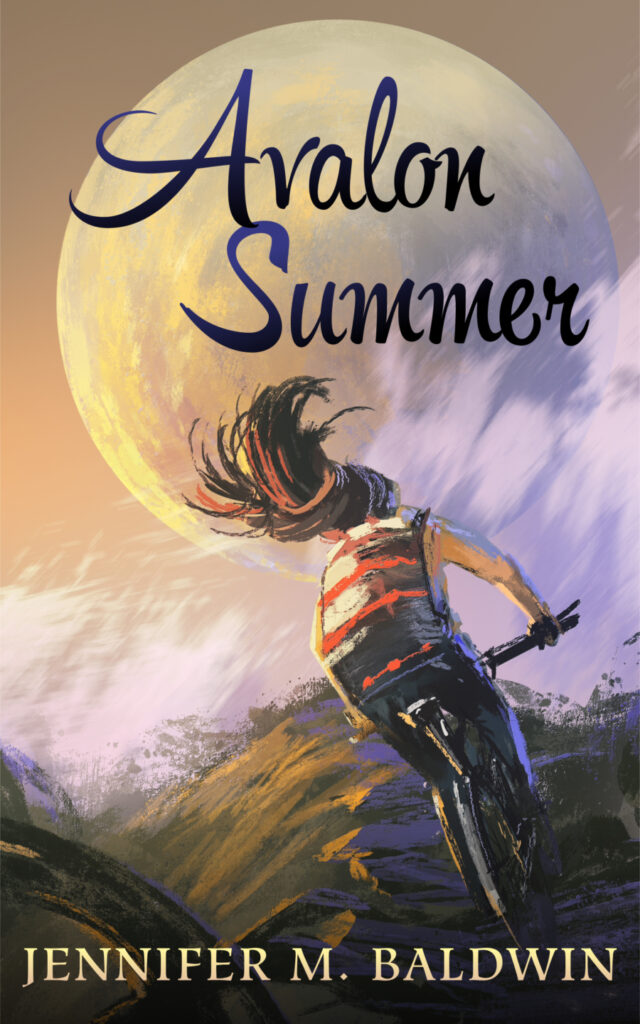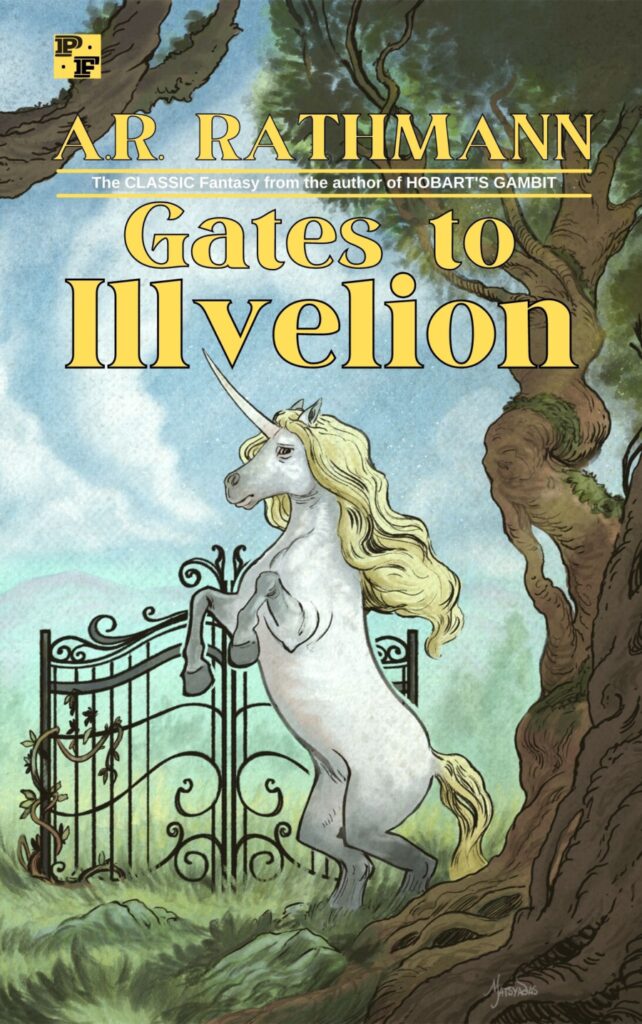 I decided to set my series, Merlin’s Last Magic, in the 1980s because, for me, the 1980s were the “golden age” of fantasy-related stuff: Conan. Red Sonja. Labyrinth. The Dark Crystal. The Last Unicorn. The Neverending Story. Ladyhawke. Dragonslayer. Legend. The Dragonlance Chronicles. HeroQuest.
I decided to set my series, Merlin’s Last Magic, in the 1980s because, for me, the 1980s were the “golden age” of fantasy-related stuff: Conan. Red Sonja. Labyrinth. The Dark Crystal. The Last Unicorn. The Neverending Story. Ladyhawke. Dragonslayer. Legend. The Dragonlance Chronicles. HeroQuest.
I grew up in the 80s, and because fantasy seemed to be everywhere during that decade, my imagination was fertilized by all of these movies, books, and board games. In writing Merlin’s Last Magic, I wanted to give a little nod to the decade that nurtured me.
But as I was preparing to write this post, I realized that perhaps the 1980s weren’t really the golden age. Or, if they were the golden age, then perhaps they’ve given birth to an even more exciting and fertile age for fantasy genre stuff: Right now.
I contend that perhaps it wasn’t the 80s at all that were THE decade for fantasy lovers; perhaps that time is now. Perhaps we are living in the true golden age at this very moment (the Platinum Age, perhaps). Just look around: fantasy and science fiction have never been more mainstream or popular, from HBO’s Game of Thrones to the Marvel movies to fantastic writers like Patrick Rothfuss, Brandon Sanderson, and Neil Gaiman (all of whom are being courted by Hollywood for big-budget adaptations of their work).
Being “Geek” is cool. Nerds no longer hide their obsessions but display them proudly. San Diego Comic-Con (not to mention the dozens of other conventions that have gained prominence in the last decade) has become Mecca not just for comics nerds and sci-fi geeks but for big-name celebrities and the mass media at large. When I was twelve, I tried to hide my love for J.R.R. Tolkien and Middle-Earth; when I turned twenty, Peter Jackson’s The Fellowship of the Ring was debuting in theaters, and suddenly, I didn’t have to hide anymore.
I think this new geek renaissance can be credited to both Jackson’s films and the Harry Potter phenomenon. Without either of these two creations, my fellows geeks and I would most likely still be part of a niche genre, something that the “wider world” looks down on with slight disdain. But because Jackson’s movies were incredible international hits, and because Harry Potter continues to be a straight-up juggernaut in the film and literature worlds, suddenly being “geeky” was cool. The media at large (and the people who consume it) are always gravitating towards what makes money, what sells. And starting with Harry Potter and the Lord of the Rings movies, fantasy started to sell, and sell hard.
The success of the Game of Thrones TV show has cemented fantasy as a genre that adults can and should enjoy. Now we have TV shows like The Magicians, Vikings, and American Gods, (not to mention the Marvel and DC superhero shows), and no one is hiding their fandom for these SFF stories anymore. We are allowed to like (and even love) fantasy and science fiction in a way that was just not possible in the 1980s.
But we can’t dismiss the decade of my childhood. The golden age of geekdom that we are experiencing now is a direct result of the fantasy and sci-fi of the Reagan Decade. What do so many of today’s popular novelists, showrunners, and screenwriters have in common? We came of age in the 1980s (or at least, many of us did). We grew up soaking in the realms of Krynn and Fantasia and Thra. Our heroes were Conan and Molly Grue. We played endless hours of D&D and HeroQuest and Warhammer and turned all of those adventures into our first, fumbling stories and novels. Without the incubation of the 1980s, the golden age of today wouldn’t have happened.
For my own part, The Thirteen Treasures of Britain and the Merlin’s Last Magic series wouldn’t exist without the countless hours I spent reading Rosemary Suttcliffe’s Arthurian books, watching Excalibur when I was probably too young to be watching it, and playing Pendragon role-playing game (which, technically, I first discovered in 1990, but who’s counting). I learned to tell stories — and I learned to love telling stories — from reading MERP and RuneQuest and other fantasy RPGs, and then creating my own fantasy worlds in which to role-play. I fell in love with the realms of heroes by devouring books by Raymond E. Feist and Tracy Hickman & Margaret Weis. I became lost in the kingdoms of Faerie by watching Labyrinth, The Neverending Story, and Willow like they were on an unending loop.
The stories I write now are the children of the stories I wandered in during my childhood. We are in an incredibly fertile age for fantasy and science fiction. But we cannot discount the debt we owe to the 80s. The cheesy special effects, the cliche story lines, the underground and misfit-like nature of these movies and books are there for us to see, in the hindsight of 30+ years. But these things do not diminish the magic and sway these stories still hold over us. If the future looks bright for SFF, it’s only because our destinies were forged in the fires of the gloriously geeky 80s.
 I’m an incredibly nostalgic person.
I’m an incredibly nostalgic person. The Lone Wolf books were perfect: Choose Your Own Adventure meets solo-RPGing.
The Lone Wolf books were perfect: Choose Your Own Adventure meets solo-RPGing. Unfortunately, in the pre-Internet age, it was hard to find many Lone Wolf books. I’m not sure I ever found more than two. Just as quickly as I had found them and loved them, I had met a dead-end.
Unfortunately, in the pre-Internet age, it was hard to find many Lone Wolf books. I’m not sure I ever found more than two. Just as quickly as I had found them and loved them, I had met a dead-end. Then I laughed almost hysterically. It was like seeing a long-lost best friend while standing in line at the DMV.
Then I laughed almost hysterically. It was like seeing a long-lost best friend while standing in line at the DMV. I started with Book 3. Every page was dripping with nostalgic memories: the map at the front, the “Action Chart,” the “Combat Results Table.” I resisted the urge to look up anything on the Internet about how to “win” the adventure. I wanted my experience to be fresh, untainted.
I started with Book 3. Every page was dripping with nostalgic memories: the map at the front, the “Action Chart,” the “Combat Results Table.” I resisted the urge to look up anything on the Internet about how to “win” the adventure. I wanted my experience to be fresh, untainted. I am in the midst of reforging my relationship with fantasy literature. As a youngster, I read a lot of fantasy but fell out of the habit until I hit college. In college, I rediscovered Tolkien, C.S. Lewis, as well as myth and folklore, but it wasn’t until I read G.R.R.M.’s Game of Thrones and Patrick Rothfuss’s The Name of the Wind that I finally got back into reading fantasy that had been published within the last forty years.
I am in the midst of reforging my relationship with fantasy literature. As a youngster, I read a lot of fantasy but fell out of the habit until I hit college. In college, I rediscovered Tolkien, C.S. Lewis, as well as myth and folklore, but it wasn’t until I read G.R.R.M.’s Game of Thrones and Patrick Rothfuss’s The Name of the Wind that I finally got back into reading fantasy that had been published within the last forty years.



